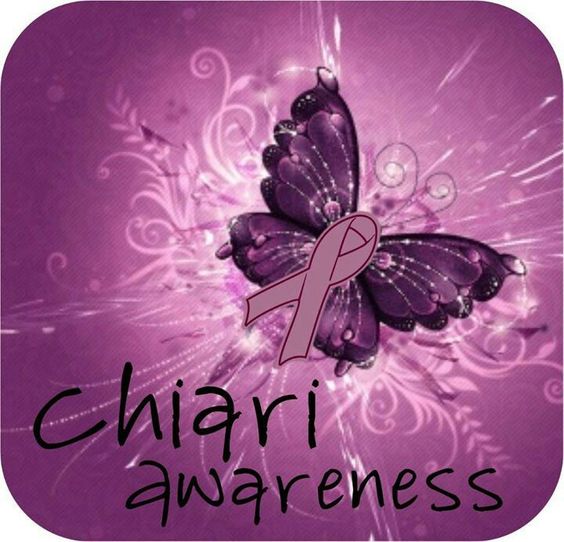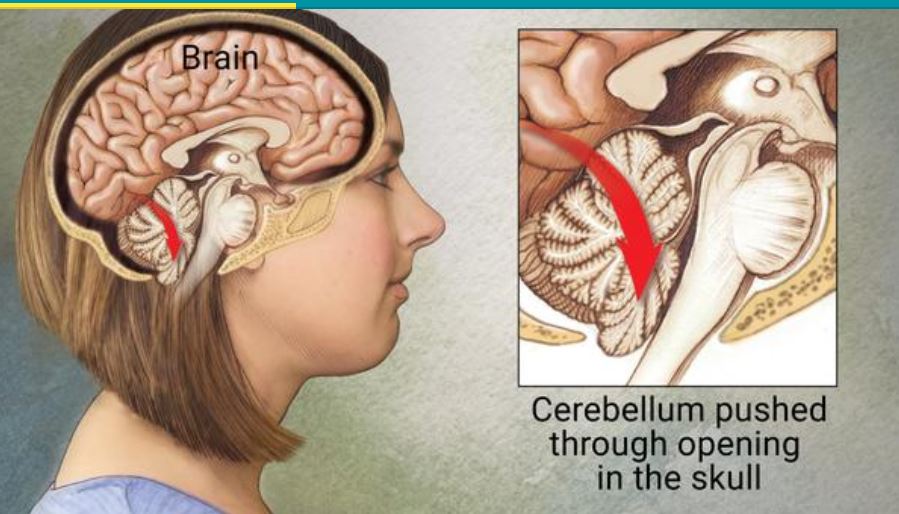
My Physical Challenge – Arnold Chiari Malformation
The car in front of us suddenly stopped, causing my husband to stomp on the brakes and my head to whip back. The traffic crawled through the congested construction zone but soon returned to sixty miles an hour. Minutes later red brakes flashed again. We came to an abrupt halt, and my head bounced off the headrest. I closed my eyes and bent forward to relieve the pain.
The traffic raced back to the speed limit, and for a third time within a fifteen mile stretch of freeway, we hit gridlock. My husband slammed on the brakes to avoid an accident. I hurt from the back of my neck, up over the top, and down to my eyes. The pain from the Chiari Migraine made it hard to look up, move my head, or even think.
We stopped for a break at a fast food restaurant, and I could barely unfold my legs to get out of the car. When I tried to walk, I got dizzy and lost my balance. The next morning, the pain had not left and every step I took pounded in the back of my head.
The driving incident began a series of migraines caused by my Arnold Chiari Malformation. My recurrent headaches with radiating pain in my neck, across my shoulders and down my spine are now part of my daily life. I changed my activities and routine to avoid many of the actions I knew cause a headache, but at times, merely turning my head brings on a migraine.

What is an Arnold Chiari Malformation
Chiari Malformations, pronounced Kee-are-ee, are structural defects in the base of the skull and brain tissue present at birth. It affects people of all ages from birth through adults, often not showing signs until the ages of 20-40 or later, as in my case.
Chiari Malformations occur when part of the cerebellum pushes through an opening in the skull into the upper spinal canal, blocking the flow of the cerebral spinal fluid. The blockage creates a downward pressure which forces the lower portion of the brain onto the brain stem causing various symptoms throughout the body.
Although not considered a fatal condition, it can cause permanent nerve damage if not treated either medically or surgically by a professional familiar with Chiari.
Symptoms
Some people with Chiari Malformations have no symptoms. Others may have symptoms such as:
- Pain in the lower back of the head and the neck
- Dizziness
- Muscle weakness
- Numbness
- Vision problems
- Headaches
- Problems with balance and coordination
- Difficulty swallowing
- Nausea
- Ringing or buzzing in the ears
- Insomnia
- Depression
- Problems with hand coordination and fine motor skills
An MRI is frequently used to diagnose Chiari Malformation. If the Chiari causes no symptoms and doesn’t interfere with daily activities, no treatment is necessary. Others may need medications to manage the pain. Surgery is the only treatment to correct the functional defects and stop the progression of damage to the central nervous system.
My Diagnosis
A doctor discovered my Chiari when I couldn’t move my right arm or walk without being dizzy and losing my balance. After treatment, I learned to control my symptoms for well over ten years until the “car accident” when my symptoms continue to worsen. My neurosurgeon recently requested new MRI images and now recommends surgery.
According to one study, decompression surgery to treat Chiari Malformations decreased headaches by 75%, reduced other neurological symptoms by 88%, and decreased the daily impact on people’s lives by 75%.
Chiari Malformation is a problem for life, but the effects are most often controlled or reduced with medical treatment and surgery as needed. I will be having surgery soon and pray that God will give me a very positive outcome.
Sources:
https://www.webmd.com/brain/chiari-malformation-symptoms-types-treatment#1
https://www.ncbi.nlm.nih.gov/pubmed/19519678
Joyce Zook is an AACC board certified biblical counselor and marriage coach working with women online and by phone. She is a wife, mom, grandma, author, and speaker from east Texas. Joyce deals with the symptoms and migraines of an Arnold Chiari Malformation. Connect with her on Facebook, Twitter, and her blog. JoyceZook.com


Hello Joyce,
I have a chiari malformation and I am 39 years old. I discovered it when I was 34. It wasn’t great the symptoms would come and go, but now they are so bad. Headaches that feel like I slipped and hit the back of my head off a step. It hurts to eat sometimes because opening my mouth hurts by head. And many more, I’m sure you are aware of them all.
I’m wondering if you have any advice on how to manage symptoms. So far I am taking cough tablets to stop the chronic cough to at can bring on the headaches. I’m taking antiinflamatory help to with inflammation as I can’t swallow tablets when I have a flare up. I have a new MRI booked for December, so I’ll see what the NS says.
I couldn’t find a follow on article where you say how you found the surgery?
Thanks for your time.
All the best,
Justine
I would love to chat with you, hear your story, and share some of mine.